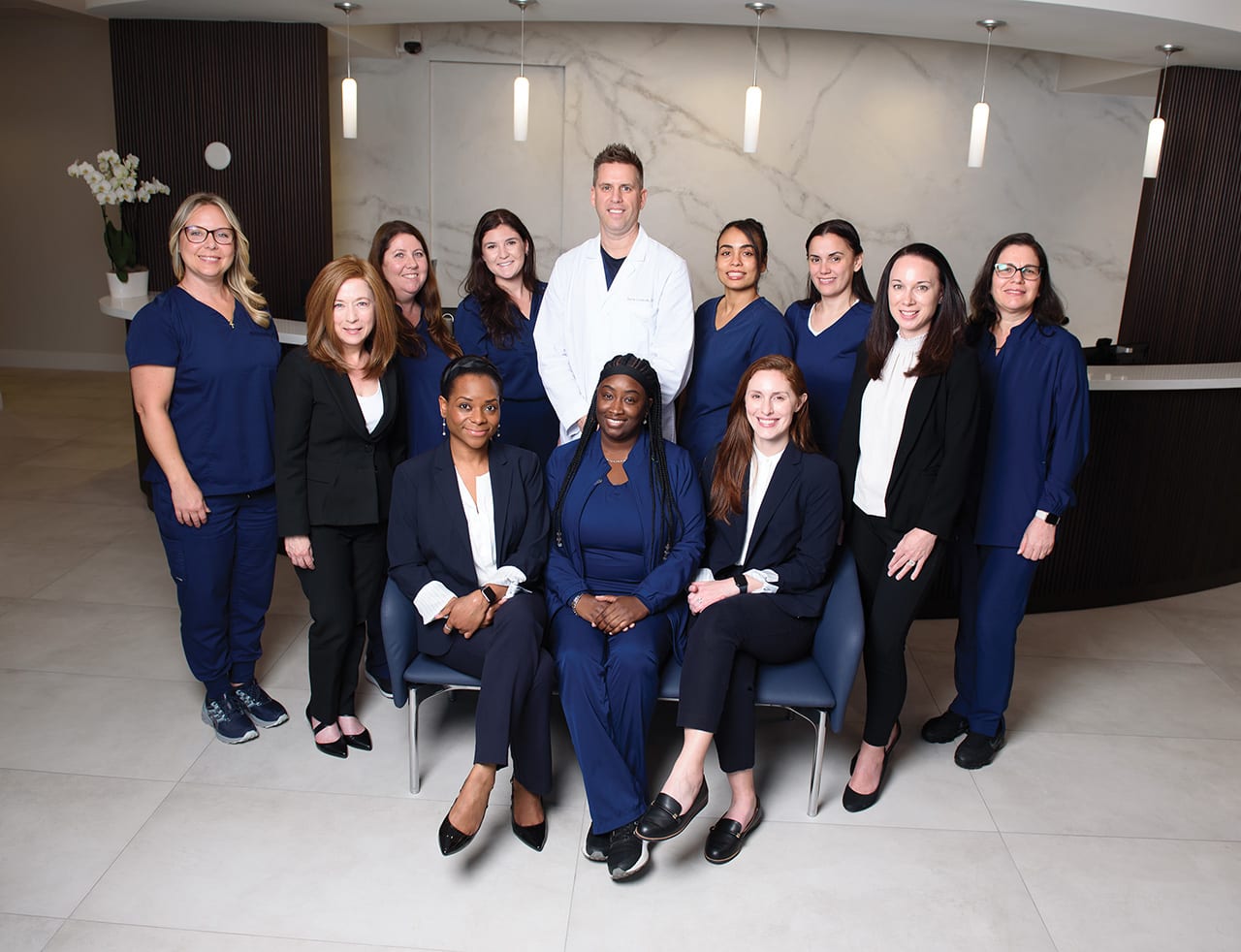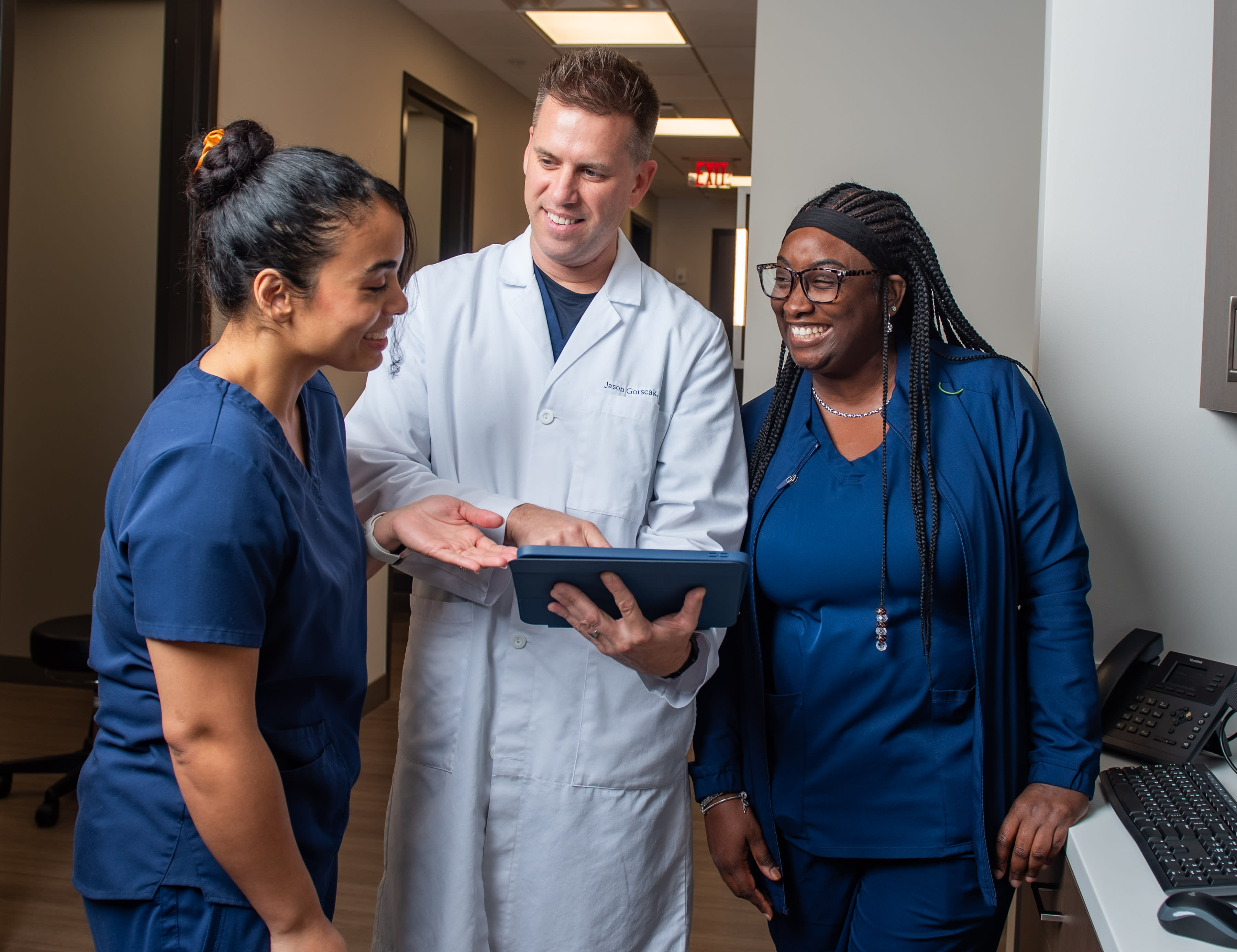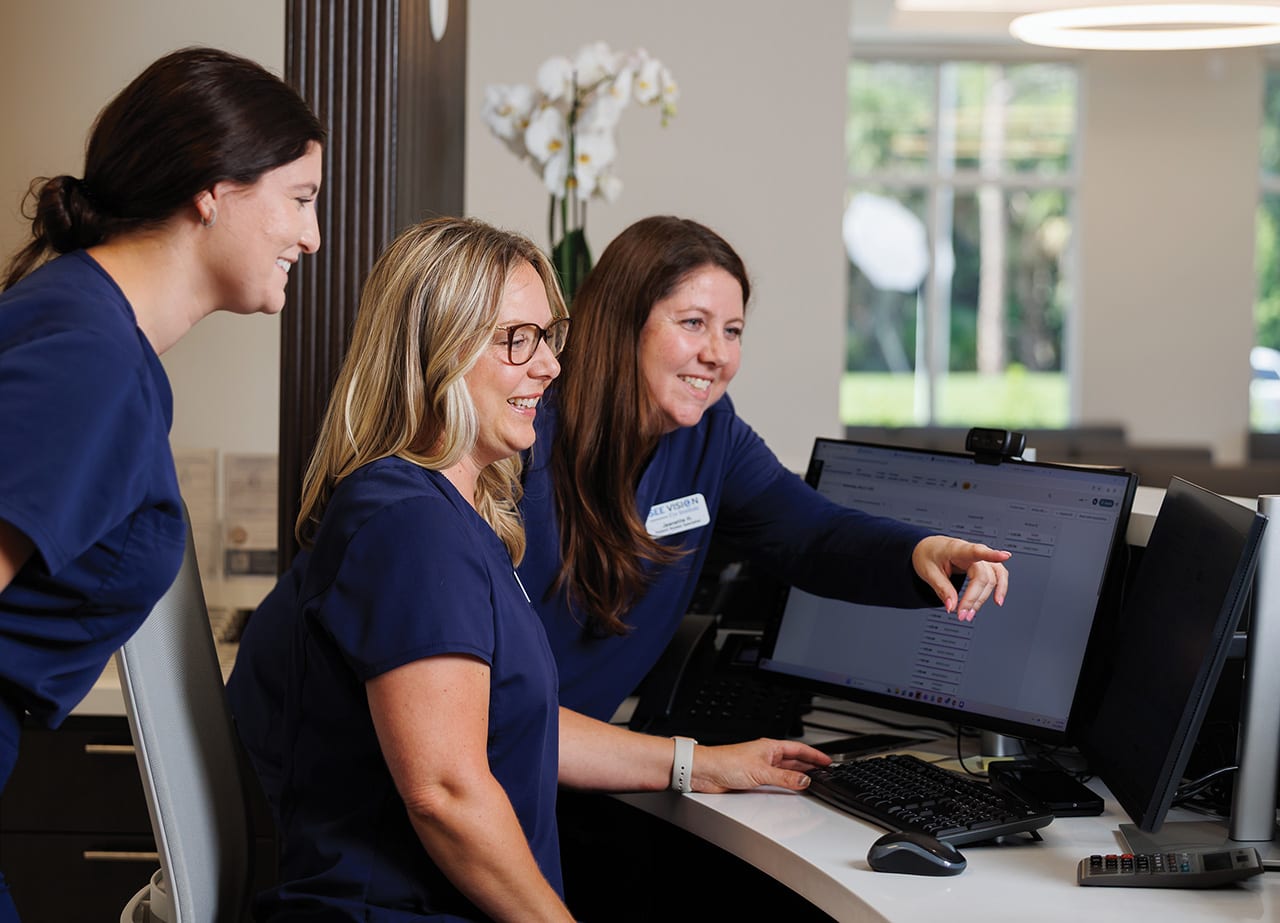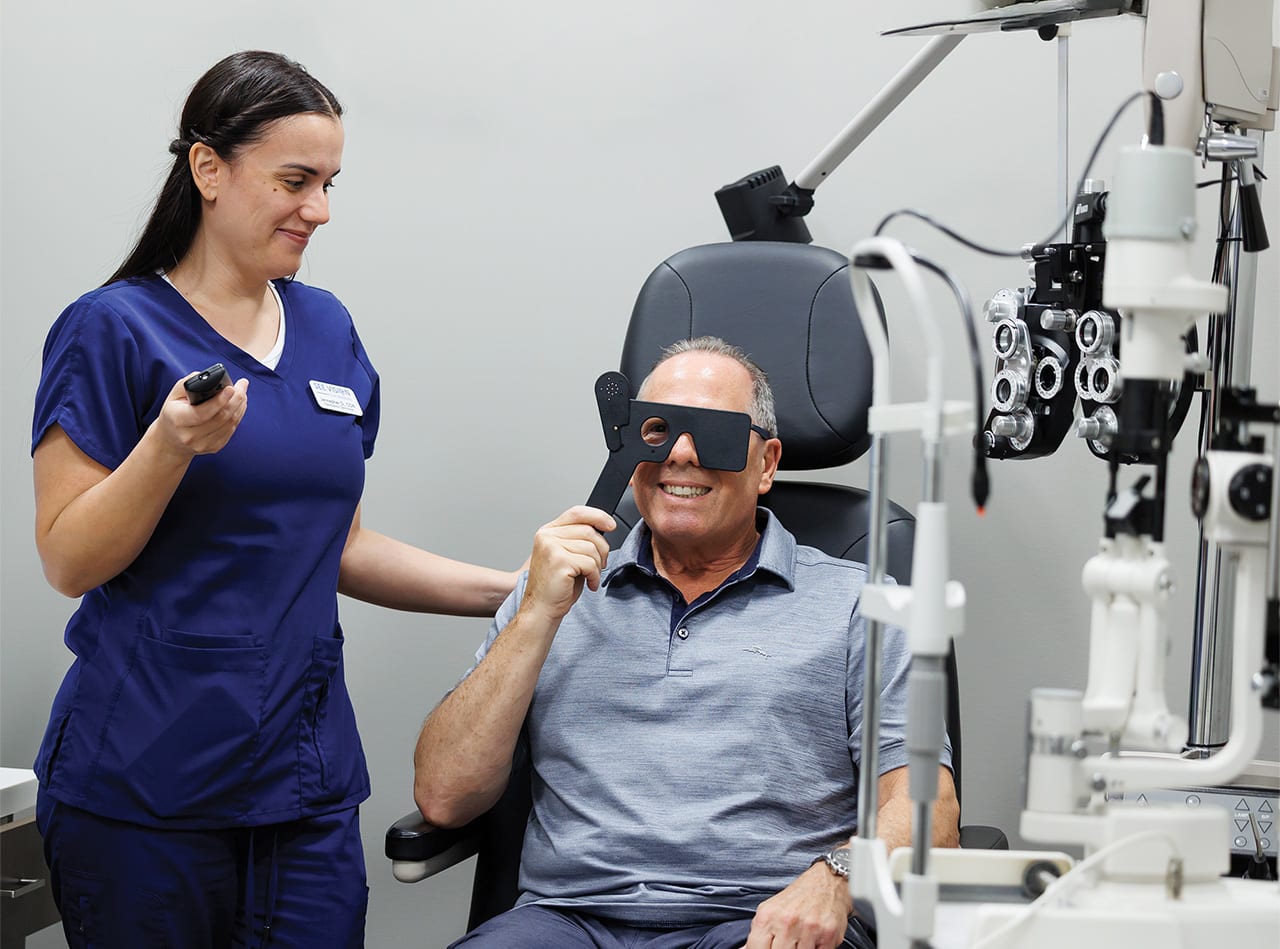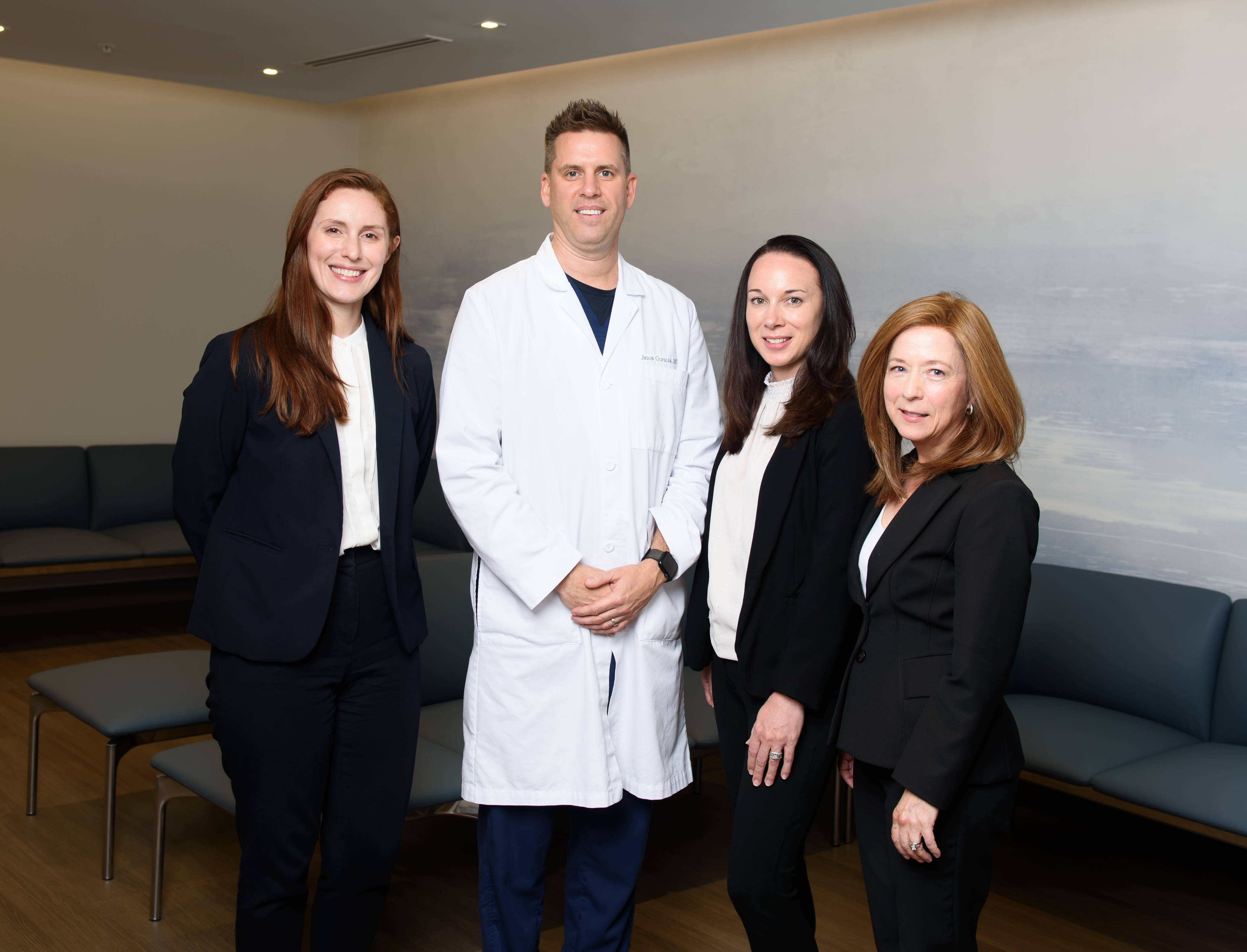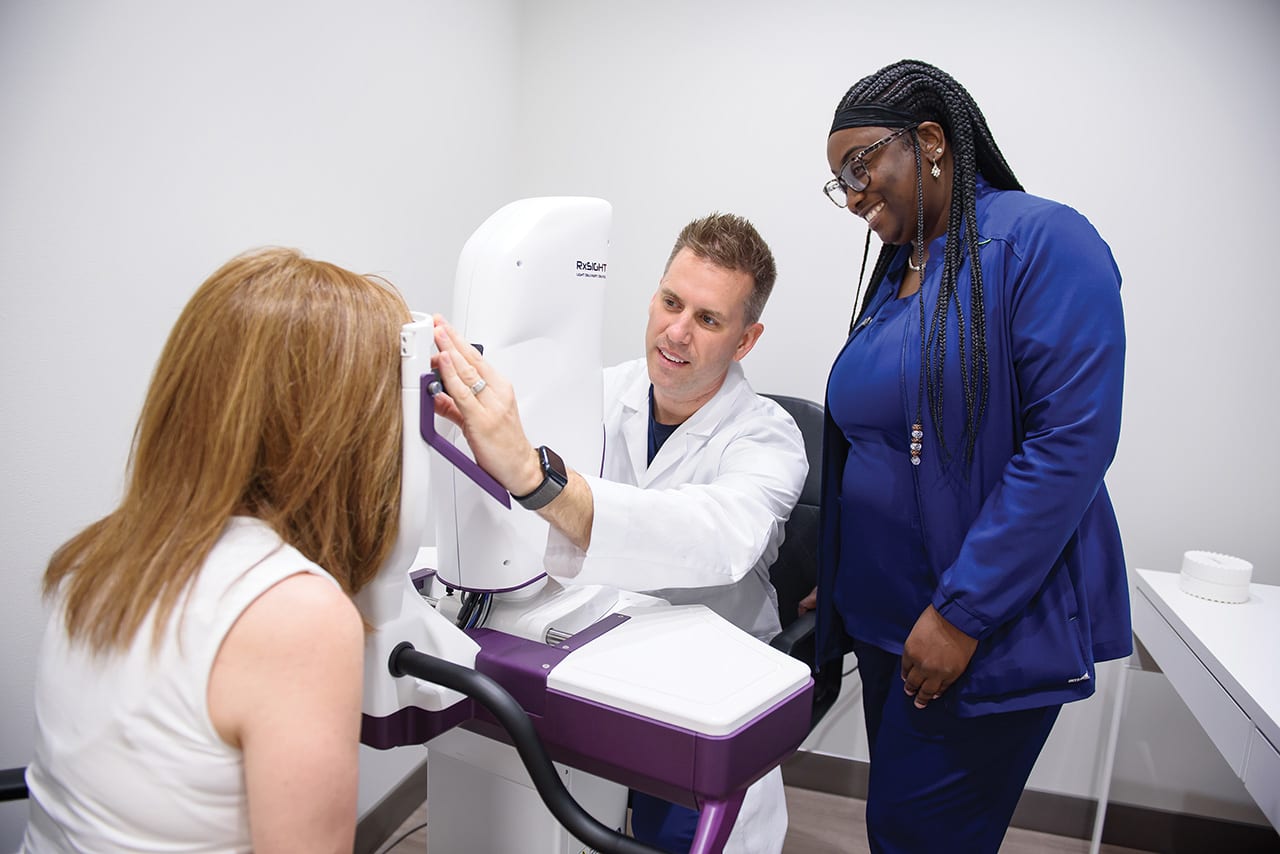All images by Tracey Benson Photography
In a day and age when patients increasingly express that they perceive their ophthalmic experience to be rushed and impersonal, See Vision Eye Institute in Palm Beach County, Florida, was designed to be different. Even the seemingly smallest details have been strategically considered. Now, with their brand-new, 15,000-square-foot building, the practice has combined their clinic with a state-of-the-art surgery center to ensure patients can receive all their eyecare needs in one location.
More Than Just a Number
See Vision founder and chief medical officer Jason Gorscak, MD, says that he set out to build a practice that was focused on delivering a premium patient experience that would wow everyone who comes through the doors. Though he had already been practicing for 17 years, the construction of a new building gave Dr. Gorscak the opportunity to create a physical space that would perfectly complement how he envisioned an improved patient experience.
“I founded this practice with the belief that ophthalmic care can be provided in a way where patients feel like they’re more than just a number,” says Dr. Gorscak. “That starts from the moment they pick up the phone to make an appointment to the day they walk in and are greeted warmly all the way through to their surgical and post-surgical experience.”
Dr. Gorscak says that the key to ensuring this level of care boils down to setting a very high bar when hiring team members. To put together a “dream team,” seasoned operations leader Myra Cherchio COMT, COE, was brought on board early in the process.
“Every decision and hire we’ve made has been intentionally focused on enhancing the patient’s comfort and experience,” says Ms. Cherchio, CEO of See Vision Eye Institute. “The building was constructed from the ground up—with the first floor designed as our clinic and the second as our surgery center—but just as importantly, every facet of the practice was built with purpose. We’ve thoughtfully designed the entire patient journey to reflect our values and vision.”
Every Patient Is “Our Guest”
For patients, the difference can be felt from the start. Upon checking in, patients give their cell phone number and are told they will receive a text when it’s their turn. Then they can roam a bit and don’t feel confined to a waiting room chair. This small detail can go a long way in putting patients at ease right from the start, says Tracy Lorusso, patient services specialist, who is the first face that patients see at the front desk.
“We think of each patient that comes in our doors as ‘our guest,’” she says. “We know that many patients who come in with a vision need are nervous, so our goal is to make them comfortable right from the start. It sets the tone for the entire visit.”
To make sure patients feel like “a person and not a number,” Ms. Lorusso says the goal is to say their name at least 3 times during their visit.
“The front desk, the tech, and Dr. Gorscak all say it at least once so it’s easy to accomplish this goal,” she continues. “What happens when we do this is that we do end up remembering and since we get a lot of repeat patients, it starts to come naturally.”
One Technician for the Entire Patient Journey
The experience with the ophthalmic technician is also quite different from what patients may have experienced elsewhere. Patients remain with the same technician throughout their journey.
“Unlike most practices, where a patient gets handed off several different times because each tech has a different role, here we stay with them from the beginning,” says Jennepher Da Silva, COA. “We are trained to do all the testing, workups, and patient education. It gives a much more personalized feeling, and you build more of a relationship with someone if you aren’t moved around so much. It’s a critical way that we keep the patient at the center of what’s going on.”
Ms. Da Silva, who has been an ophthalmic technician for 14 years, says “Everything we do is to make sure patients feel comfortable and well-informed. We are also very efficient at testing, which helps with patient flow.”
Continuity Between the Clinic and Surgery Center
There is also continuity between the clinic and the surgery center. Most of the time, even if a practice has a clinic in the same location as a surgery center, they are operated entirely separately. This can result in the patient experience feeling very disjointed. But See Vision has cross trained the team so that patients don’t end up with one team for the clinic and one for surgery. Patients become familiar with everyone involved in their care.
Jamie Marsh, RN, operations manager, plays a key role in helping facilitate a seamless and stress-free experience for every patient. She says this involves a lot of “systems” and “behind-the-scenes strategy” that keeps everything running smoothly.
“There is intention behind every step we take,” Ms. Marsh says. “We don’t just schedule appointments, we coordinate care. And we don’t just work up a patient, we prepare a moment that could change their lives. It is this attention to detail that wows patients.”
A Positive Team Culture That Patients Notice
Ms. Marsh works closely with Leylan LeCompte, patient experience manager, who oversees the clinic, patient services team, and the operating room team. Ms. LeCompte has an undergraduate degree in psychology and previously worked in sales, providing her with a unique blend of skills that has translated well into overseeing the patient’s experience.
“We have been very intentional about creating crossover between our management team so we don’t become siloed,” says Ms. Cherchio. “We have Jamie in charge of what the patient is doing and Leylan in charge of what the patient is feeling. Both of them are also strongly focused internally on team culture and ensuring that the staff’s needs are met. We are firm believers that we must all support one another and have each other’s backs. That positive team culture shines through to how we interact with patients.”
Ms. Marsh adds that the closely intertwined nature of everyone’s roles helps everything run smoothly.
“I think management is often compartmentalized, but here, we take a different approach,” she explains. “We all have our own roles, but we also work very closely in a way that they are often seamlessly overlapping. This is how we’re able to best support our staff and our patients.”
In addition, Ms. LeCompte says that a strong emphasis on the staff’s “soft skill development” helps ensure patients are seen as people, first.
“Vision is deeply personal for people, and we always keep that in mind,” she says. “We know that people don’t just want good outcomes, they want to feel safe, heard, and confident about their care. This is why we keep the patient experience at the center of everything that we do.”
Keeping up with the latest technology also helps ensure the best for patients, says Dr. Gorscak.
“The technology that is available today, particularly with lens-based solutions for cataract surgery, has given us so many ways to improve patients’ lives,” he continues. “We also invest in a lot of new equipment to stay ahead of the curve.”
But even with all the technology at his fingertips, Dr. Gorscak says that getting to know who patients are is what helps him best meet his goal of customized care.
“In order to make recommendations, I get to know about the patient and their lifestyle so that I can fully understand how they use their vision throughout the day,” he says. “With so many lenses out there, what’s right for one patient might not be for another, so we must look at each patient as an individual. It goes beyond a questionnaire. I spend a lot of time just talking to my patients.”
Ultimately, each of these efforts helps patients feel comfortable and confident—which is the desired effect.
“Having any surgery can be scary but there’s often a heightened level of anxiety that comes with eye surgery,” says Dr. Gorscak. “Our job is to put our patients at ease and let them know they’re in the right place.” OP









